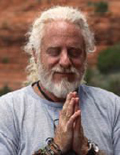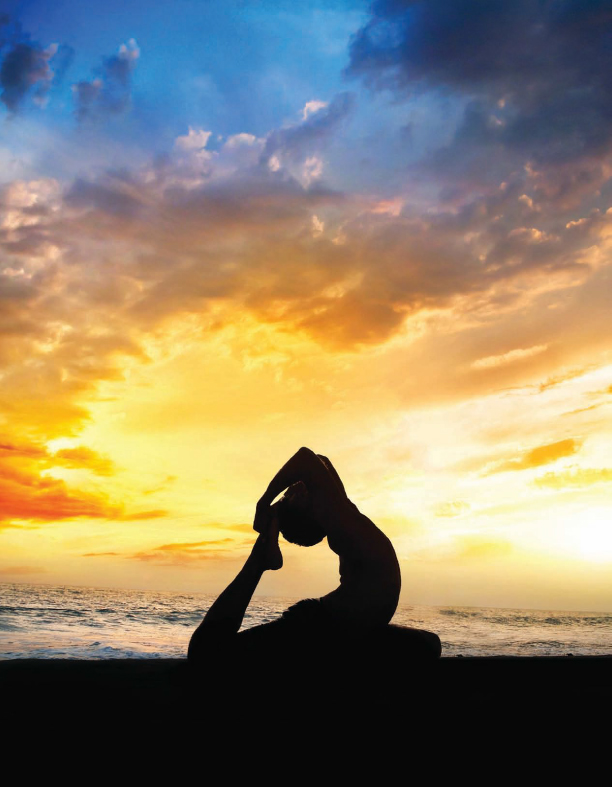Our modern daily life is bursting with all the trappings and discoveries of the 21st century. Technology has bridged our physical distances so we can communicate in nanoseconds even though oceans, mountains, buildings and borders separate us from each other. Body imaging software allows us to see through flesh, bone, and soft tissue so that we can more easily diagnose disease and monitor the brain’s most subtle electrical functions. Electron microscopes are now able to delve more deeply into the quantum soup of existence and explore the universe at the cellular level revealing our fundamental essence – right down to the details on our chromosomes. And, scientific advances let us move at speeds once thought impossible so that business and industry can increase productivity and accomplish more with less.
To maintain this high level of progress, the amount of multiple activities we ask ourselves to juggle has intensified to such a degree that high-speed multi-tasking is considered the norm…in fact, it’s praised and rewarded.
But evolution has not multiplied the activity centers of our brain or given our heart an extra chamber or increased the number of typing fingers on our hands. There are still the same 24 hours in each day that we had thousands of years ago. And each day is still bracketed by the rising and setting of the sun, the months by the phases of the moon, and the years by the changing of the seasons.
So how do we keep pace, find balance, and stay aligned amidst this relentless, rushing onslaught of information and energy? As Einstein said, “No problem can be solved from the same level of consciousness that created it”. The answer to this universal dilemma rests not in a new fangled iCalendar, day planner, or time management tool. The answer is in a pattern interruption technology that has existed since the dawn of mankind that can move us through and beyond most of the constrictions that unfold within us during the day. The answer is the ancient technology known as meditation.
And interestingly enough, some of the most profound answers to this mysterious existence of ours have been resting innocently between the covers of an ancient Vedic text known as the Bhagavad Gita or Song of the Lord. Written several millennia ago, this 700-verse wisdom treatise contains some of the most powerful conversations ever recorded in ancient or modern literature. The running dialog between the warrior prince Arjuna – deeply conflicted as he stands on the precipice of his greatest battle – and his charioteer Lord Krishna, who progressively reveals the wisdom of the ages – is as insightful today as it was thousands of years ago before the age of the internet, smartphones, organ transplants, fuel injection, and nuclear fusion.
The 18 wisdom-abundant chapters of “The Gita”, as it is fondly referred to, is a body of knowledge that explores and reveals the answers to mankind’s most ponderous concerns: the meaning of life and the relevance of physical death, the reasons for war and the benefits of peace, the relationship between God and man, ways to achieve one-ness with the divine, our purpose here on earth known in Sanskrit as dharma, the significance of our actions, and the impact of the choices we make in our daily existence.
The Gita eloquently explains the many ways we can achieve one-ness with the divine. And this timeless epic explains in detail the four spiritual paths to yoga or ways of awakening our most divine Self: Jnana yoga, the path of knowledge and discrimination; Bhakti yoga, the path of devotion; Karma yoga, the path of selfless action; and Raja yoga, literally the royal path – the actual practice of attention, awareness, yoga, and meditation.
In one of the chapters, we are treated to three simple yet profound words that teach us how to live with greater grace and ease: Yogastha kuru karmani. Established in one-ness (yoga), perform action.
Time is the watchword of our day. From the moment we open our eyes in the morning, we are aware of the weight of activities we feel we must squeeze into each moment. Getting in the shower. Checking our phone. Getting online. Hustling out of our house. Getting to work on time. In every moment, jostling for position. Sending an email without taking the time to proof it. Greeting people with nods, code, and shorthand. Dumbing our communication down to 140 characters. Substituting in-person meetings with phone calls. Replacing phone calls with texts. Racing to get on a line that inches along once we race to get there. Rushing through our day. Rushing through our life. We live in a world where we hurry up to wait.

Yet when we arrive at our desired location – even as we stand in WAIT mode, we are breathing harder than before, our heart is beating faster, our mind is swirling with greater overwhelm, our fingers are quickly texting out a message, and our attention is on what comes next. We are rarely fully present. So often, we step into the next moment from a place of activity, reactivity, or conditioned response. But by interweaving stillness and silence into our being through a daily practice, we can become less reactive, less knee-jerk, and more UN-conditioned as we take each step in life. We can actually take steps filled with pure present moment awareness…steps filled with fresh, new, and infinite possibilities.
This is how Krishna instructs Arjuna to walk through the world…from a place of one-ness or presence. And these three simple words – yogastha kuru karmani – can be our guideposts for how we should take each step in life – from a place of stillness. As the world revs at light speed around us, we will merge into the blur always being its victim if we do not center ourselves. And we can opt to STOP before we speak or act, which takes practice, discipline, and the ability to consciously step out of the moment. Or we can integrate the stillness into us through a daily meditation practice so that this one-ness or present moment awareness ripples through us unconsciously.
My experiences of the past decade has taught me that if we are willing to take the time and integrate a dedicated ritual of meditation into our daily routine, we will have a higher likelihood of being in a state of present moment awareness before we step into the next moment.
The timeless wisdom of the ancient teachings rings as true today as it did thousands of years ago. We have a choice in each moment on how we can unfold the next moment. Nothing is imposed on us. No external force governs our behaviors. And no one can dictate how we feel. Yet, two of the most common phrases in our lexicon are, “I don’t have time for …” and “I don’t have time to …”
And although there are many excuses for not starting each day with meditation, the physical, emotional, and spiritual benefits of a daily meditation practice have now been scientifically proven. The key is to integrate the practice into our daily routine right alongside the pantheon of our morning ablution rituals – brushing our teeth, showering, peeing. We dedicate time to these autopilot practices never seeing them as wasting our time – yet we often can look at sitting “doing nothing” as highly inefficient.
In the practice of Raja Yoga – where we take the time each morning to rise with the sun, sit for a period of time in stillness and silence following our breathing or repeating a mantra – most likely we are doing our most important work for the day…planting the seeds for what will unfold in each moment.

We physically and emotionally settle down. We slow our pulse and breathing. We ease our thoughts. We surrender for the moment. And we give ourselves permission to take a nourishing few minutes for ourselves. We take a critical “time in.” Whether you take 10, 20, or 30 minutes to give yourself a pattern interrupt into the daily swirl of mental and physical activity, the powerful benefits begin to take hold very quickly as you become more creative, more intuitive, more forgiving, more compassionate, a better listener, a better partner, a better problem solver, and a more fulfilled individual.
We become what we do…we are the behaviors we practice. And if we dedicate a small chunk of time to a stillness and silence practice, we ultimately become that. The present moment begins to weave through every thought, every word, and every action…and then we are indeed living yogastha kuru karmani – we are moving through life coming from a place of present moment awareness. And as we cultivate our meditation practice each day, we become more responsive and less reactive, we are more purposeful and less knee-jerk and, we are more unconditioned and less conditioned.

In the stillness of Yoga, we find the seeds for our next moment and so we can approach it with greater grace and greater ease. And even when we don’t believe we have enough time in our life to dedicate a chink of time to sit and “do nothing,” we will very quickly find that through a daily practice of meditation, we can actually have more time – and richer experiences in each moment – allowing our actions to carry greater purpose and ultimately more fulfillment.
 Davidji is an internationally recognized meditation expert, life guide, author, public speaker, and corporate wellness instructor. His best-selling book – Secrets of Meditation: A Practical Guide to Inner Peace and Personal Transformation– is the winner of the 2013 Nautilus Book Award. Davidji is a Vedic Master certified to teach Meditation, Mind-body Healing, Ayurveda, and the Seven Spiritual Laws of Yoga. He is a world-renowned creator of more than 200 guided meditations and visualizations. davidji.com.
Davidji is an internationally recognized meditation expert, life guide, author, public speaker, and corporate wellness instructor. His best-selling book – Secrets of Meditation: A Practical Guide to Inner Peace and Personal Transformation– is the winner of the 2013 Nautilus Book Award. Davidji is a Vedic Master certified to teach Meditation, Mind-body Healing, Ayurveda, and the Seven Spiritual Laws of Yoga. He is a world-renowned creator of more than 200 guided meditations and visualizations. davidji.com.







